✓ Joining us on our Whatsapp Channel: 💬 Explore and Escape!.
Booking through us:
✓ 🏩 🛌 Handpicked Luxury Stays in Budget: Booking.com | Agoda.com
✓ 🍹⛱️ Deals on Private xfers, SIM Cards, City tours, Day trips : 📍🗺️ GetYourGuide | 🛵🧳 Klook
com/landmarks/oceania-landmarks/landmarks-of-australia/”>landmarks in Africa, you’d know there are quite a few of them are here in Gambia.
Gambia’s landmarks are like precious jewels that adorn the beautiful landscape, enticing visitors to unravel their stories and secrets.
Each of these landmarks embodies the rich culture, history and natural beauty of the country, and together they form a stunning tapestry, a portrait of Gambia’s fascinating past and promising future.
From the bustling streets of Banjul to the serene shores of Bijilo Forest Park, Gambia’s landmarks offer a journey of discovery and wonder that will leave you spellbound.
1. Arch 22 – Banjul
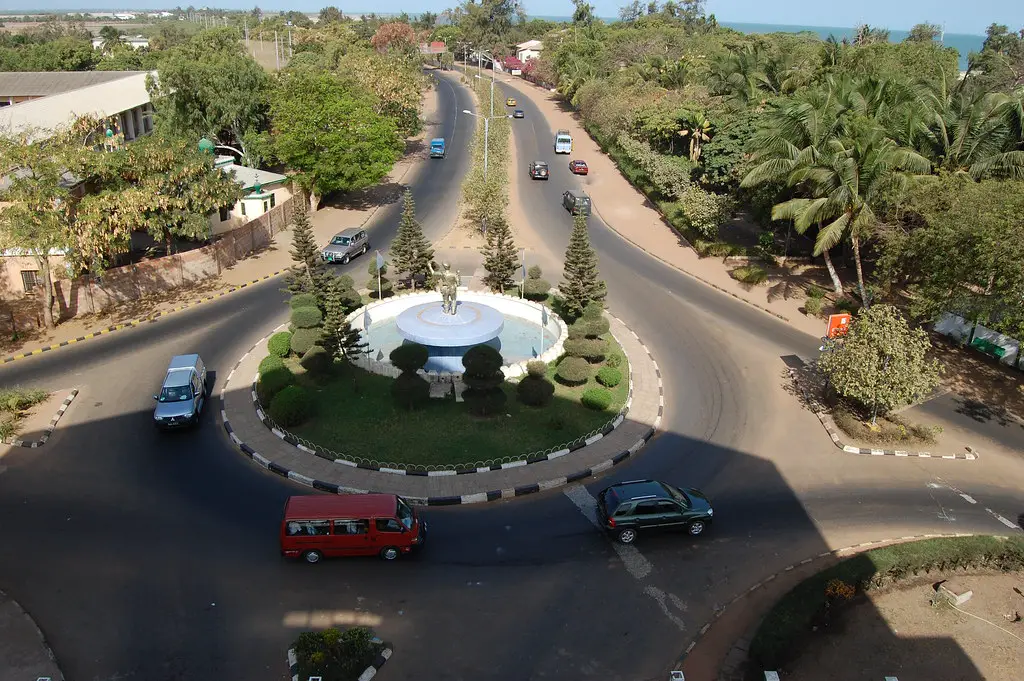
The Arch 22 is a famous landmark and historical monument in Banjul, the capital city of The Gambia.
What to see or do: Visitors can climb to the top of the arch to enjoy stunning views of Banjul and its surroundings.
Inside the arch, there is a small museum that tells the story of The Gambia’s independence movement and the history of the country.
Don’t miss: Don’t miss the opportunity to take photos with the stunning arch, especially during sunset for a golden hour shot.
Insider travel tips: – Consider visiting the arch early in the morning or late in the afternoon to avoid crowds and the heat of the day.
2. Makasutu Culture Forest – Makasutu

Makasutu Culture Forest – A private nature reserve in Gambia covering 1000 acres of mangroves, forests and savannah.
What to see or do: Go on a guided tour to explore the diverse habitats of the reserve and learn about its flora and fauna. Also, enjoy a peaceful canoe ride down the Mandina Bolon Creek or take a nature walk.
Don’t miss: Visit one of the several ethnically themed villages within the reserve to experience the local culture. Attend a traditional music and dance performance by the Jola, Mandinka or Bambara tribes.
Insider travel tips: Carry insect repellent and wear comfortable clothing and shoes suitable for outdoor activities.
More importantly, make sure to book your visit in advance as the reserve only allows a limited number of visitors at a time.
3. Albert Market – Banjul
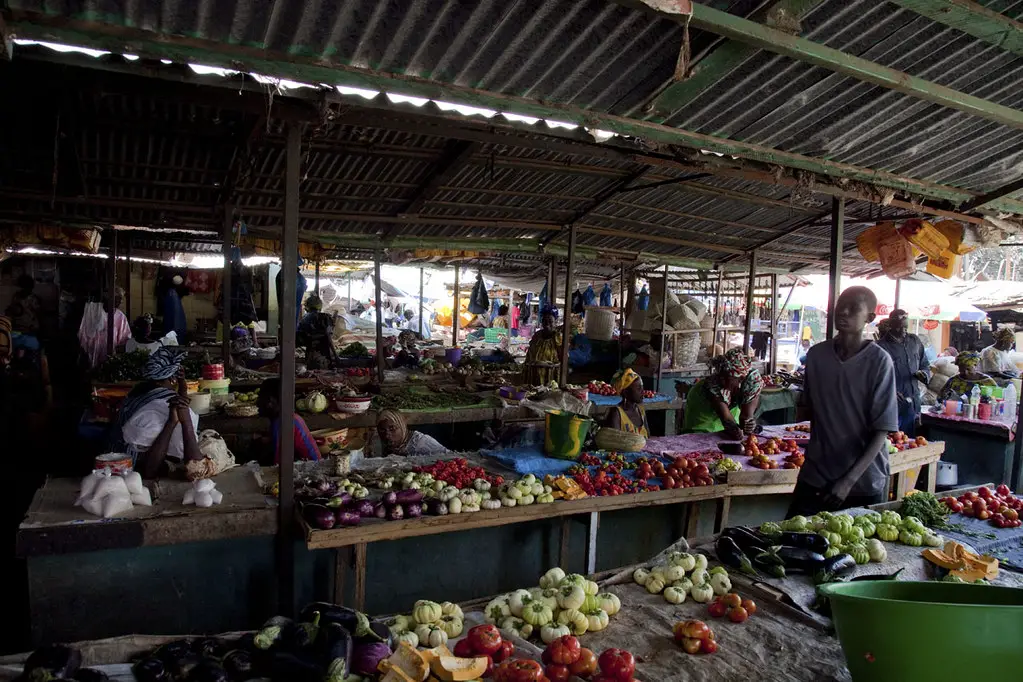
Albert Market is a bustling open-air market located in the capital city of Banjul in The Gambia.
What to see or do: Visitors can experience the vibrant culture and local life while shopping for a variety of goods, such as colorful textiles, spices, fresh produce, handmade crafts, and more.
Don’t miss: Make sure to visit the fish section of the market, where you can see fishermen bringing in their daily catch and bargaining with local vendors.
Also, don’t miss trying some of the local delicacies, such as akara (fried bean cakes) and benachin (rice dish).
Insider travel tips: Be prepared to haggle when shopping at Albert Market, as prices are often flexible.
It is also recommended to visit during the daytime to fully experience the market, and to keep an eye on your belongings as it can get crowded.
4. Fort Bullen – Barra
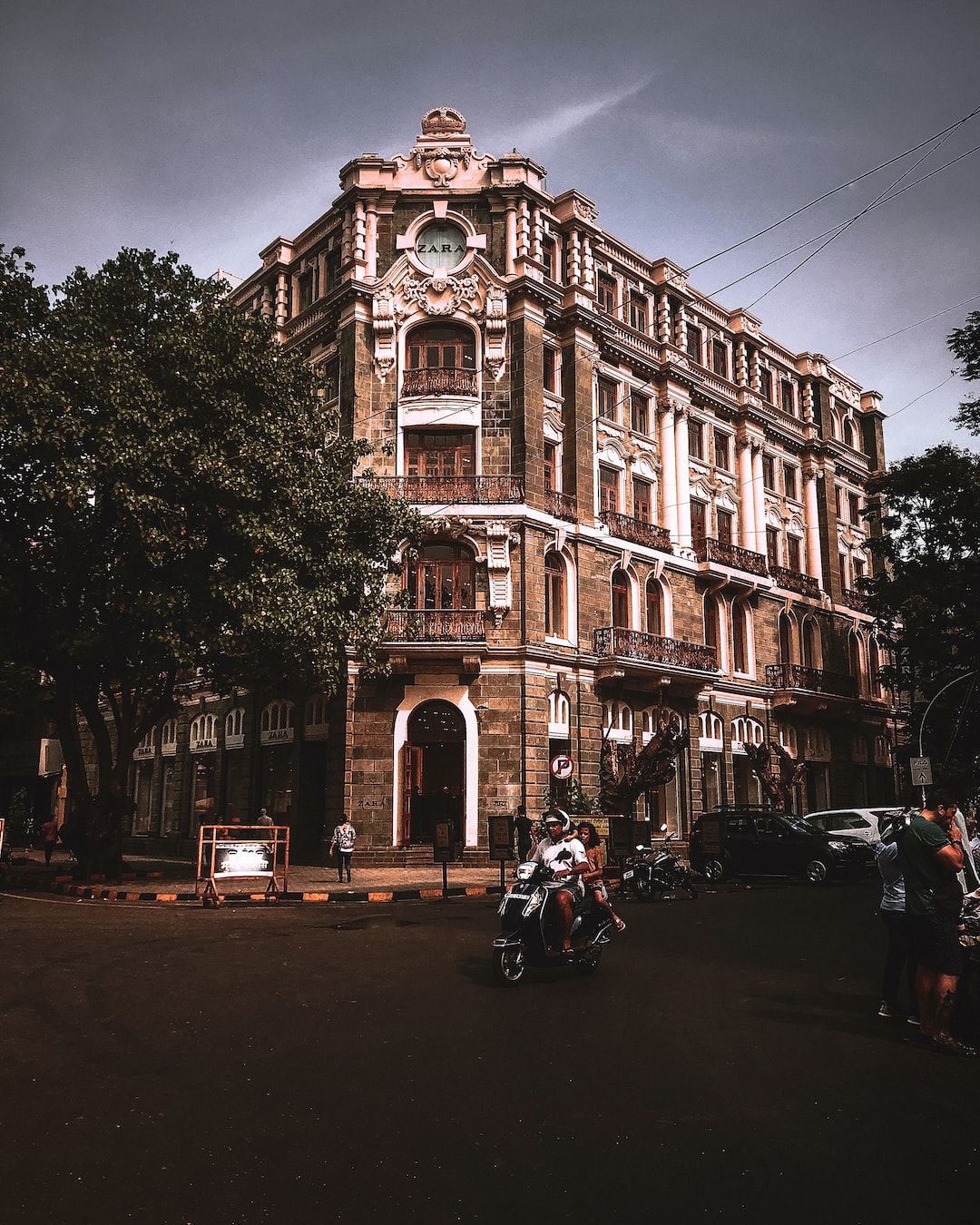
Historic fort built in the 19th century by the British to protect the Gambia River.
What to see or do: Explore the fort and its museum with its historical displays, maps, and artifacts. Enjoy the beautiful view over the river from the fort’s walls.
Don’t miss: The opportunity to learn about the fort’s role in the transatlantic slave trade and the interactions between the British and the local Wolof people.
Insider travel tips: Consider hiring a local guide to learn more about the fort’s history and its significance in the region. Wear comfortable shoes, as the site involves a fair amount of climbing and walking.
Don’t forget your camera for stunning panoramic shots of the river and the surrounding area.
5. Katchikaly Crocodile Pool – Bakau
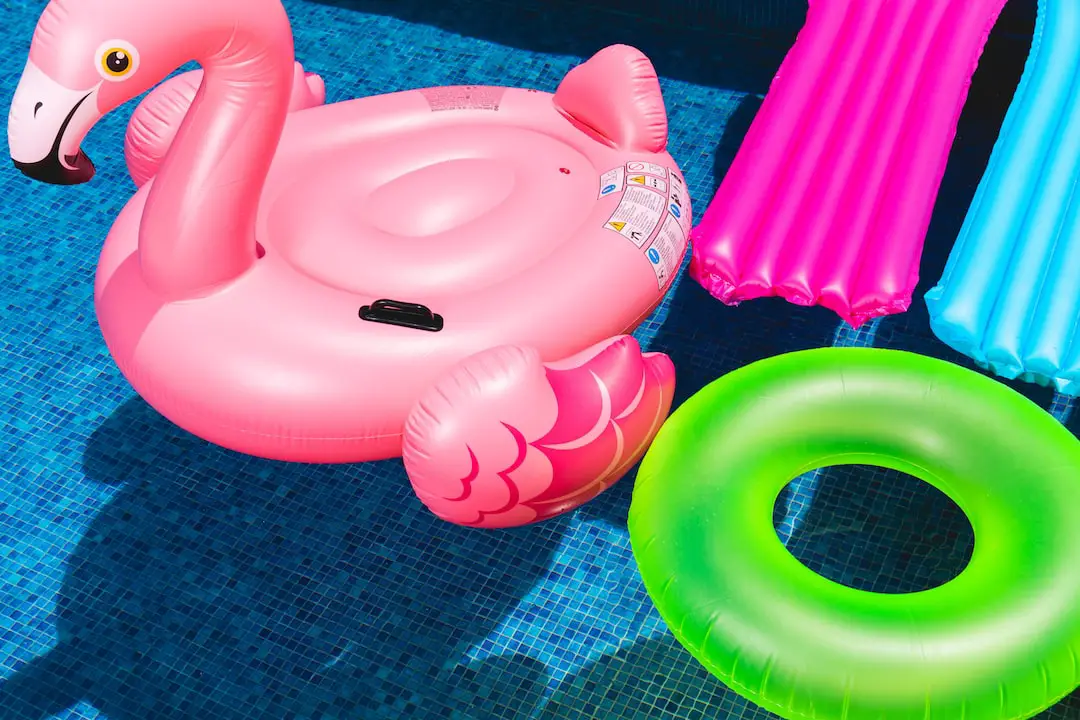
The Katchikaly Crocodile Pool is a popular tourist destination located in the Bakau district of Gambia.
What to see or do: The main attraction of the crocodile pool is the opportunity to see numerous crocodiles basking in the sun, swimming, and interacting with each other.
Visitors can take a guided tour of the pool and learn about the history and cultural significance of crocodiles in Gambian society.
Don’t miss: Don’t miss the chance to witness the crocodile feeding, which happens every afternoon. Visitors can watch as the caretakers hand-feed the crocodiles while sharing interesting facts about their behavior and habitat.
Insider travel tips: To make the most of your visit to the Katchikaly Crocodile Pool, wear comfortable shoes and clothes suitable for hot weather.
Don’t forget to bring your camera to capture the unique experience. Also, it is advisable to book a guided tour in advance to avoid any disappointments.
Lastly, be mindful of the rules and regulations while inside the pool area, always follow the instructions of the caretakers, and maintain a safe distance from the crocodiles.
6. Abuko Nature Reserve – Banjul
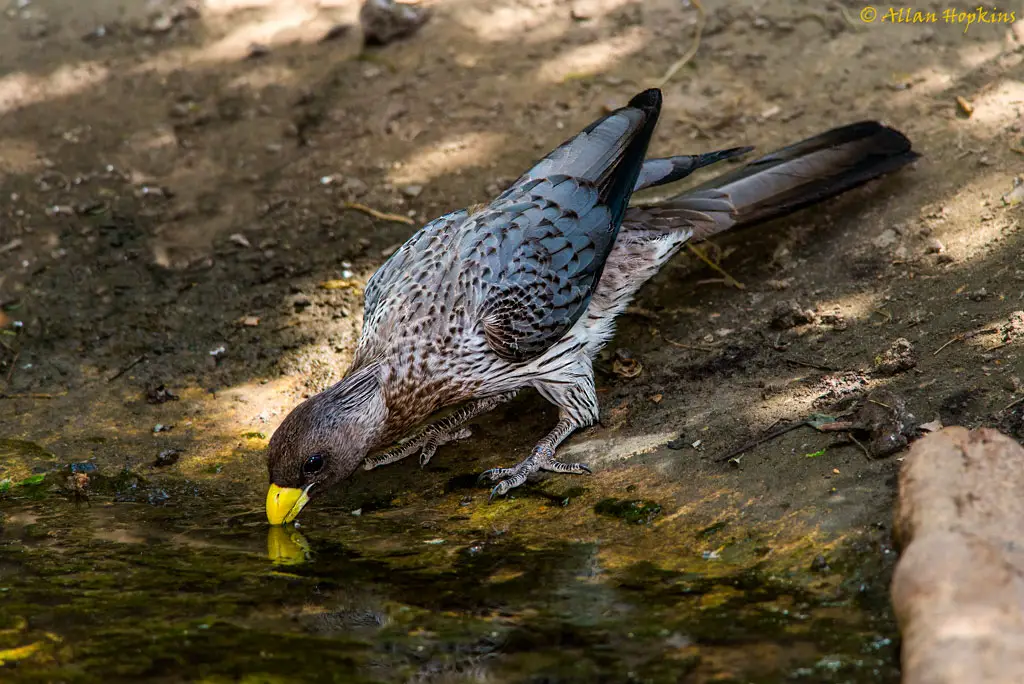
Abuko Nature Reserve is a protected area located in the West African country of The Gambia.
What to see or do: The reserve covers an area of about 105 hectares and is home to a diverse range of plant and animal species.
Visitors can take a leisurely stroll through the park’s trails to observe monkeys, crocodiles, hippos, and various bird species.
Don’t miss: Don’t miss the chance to explore the reserve’s lush vegetation, including tall trees, tropical flowers, and dense shrubbery.
The park also contains a small museum and a reptile center where visitors can observe and learn about the park’s various animals.
Insider travel tips: Bring water and sunscreen, as the park can become quite hot in the midday sun.
7. Gunjur Beach – Gunjur
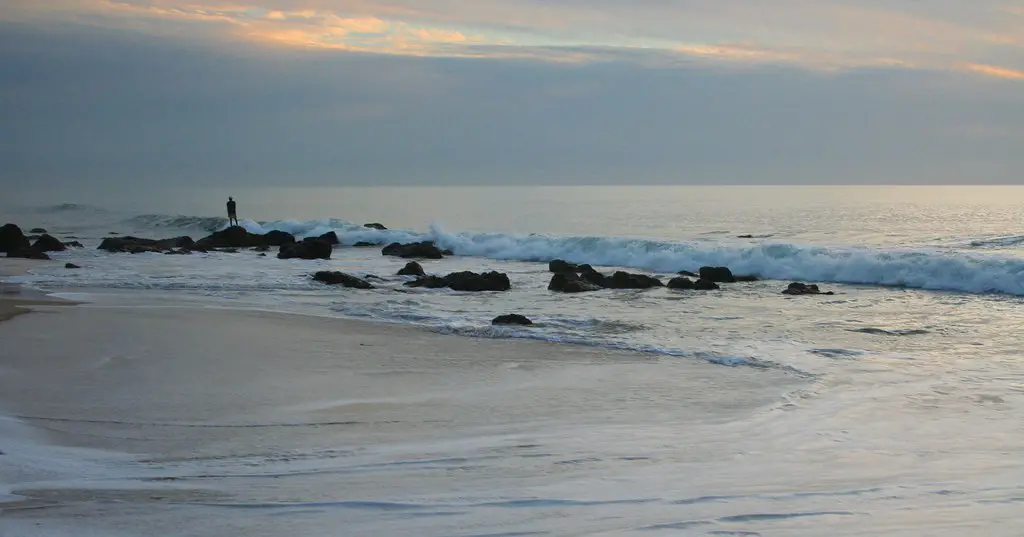
Gunjur Beach is a scenic and serene beach located in the small coastal town of Gunjur, Gambia.
What to see or do: The beach is perfect for sunbathing, swimming, or taking a stroll along its pristine white sandy shoreline. Visitors can also enjoy fishing or take part in watersports such as windsurfing and kayaking.
Don’t miss: Don’t miss the opportunity to witness the local fishermen bring in their daily catch using traditional techniques. The town of Gunjur is also home to a turtle conservation project which is definitely worth a visit.
Insider travel tips: Be sure to try some of the local cuisine at the nearby restaurants and cafes. The best time to visit the beach is during the dry season between November and May.
Don’t forget to bring sunscreen and plenty of water.
8. Bakau Fish Market – Bakau
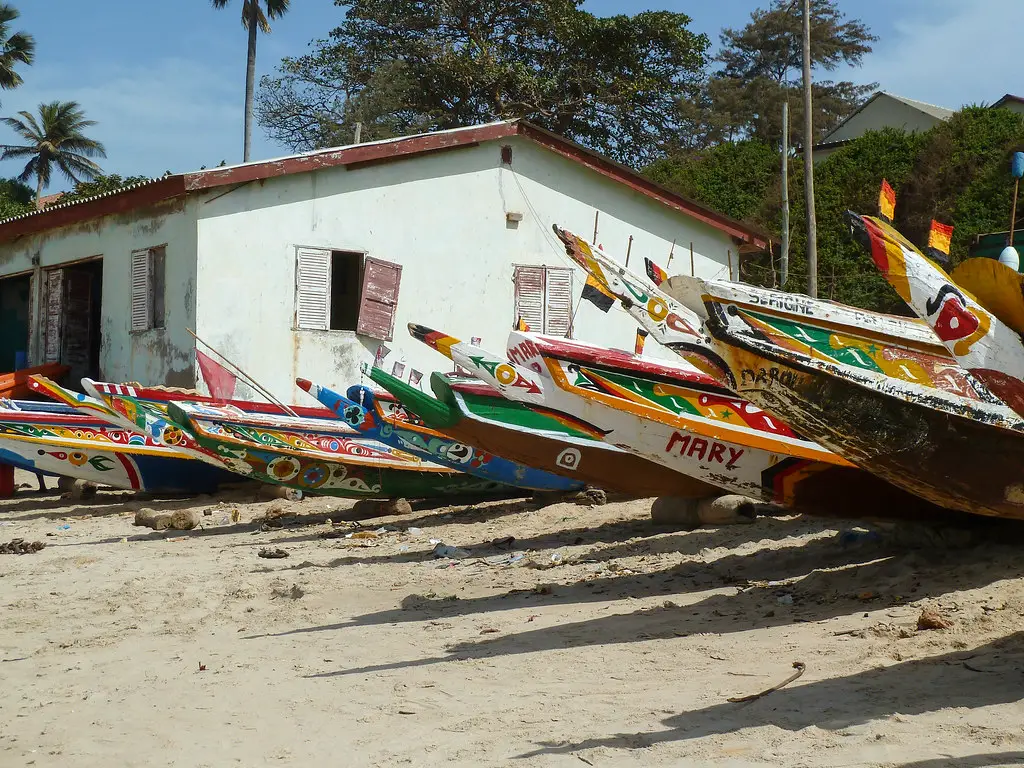
Bakau Fish Market is a bustling market located in the heart of Bakau, a fishing village in Gambia.
What to see or do: Witness the arrival of fishermen hauling in their catches of the day including tuna, barracuda, red snapper, prawns, and oysters. Explore the stalls selling an array of seafood from smoked fish to squid and shrimp.
Don’t miss: Try the freshly cooked seafood dishes at nearby restaurants.
Insider travel tips: Visit in the early morning (around 8-9 AM) to avoid the crowds and get the freshest catch. Bargaining is common practice, so be ready to negotiate the prices of seafood.
Make sure to wear comfortable shoes as the market can get a bit crowded and slippery in places.
9. Gambia River
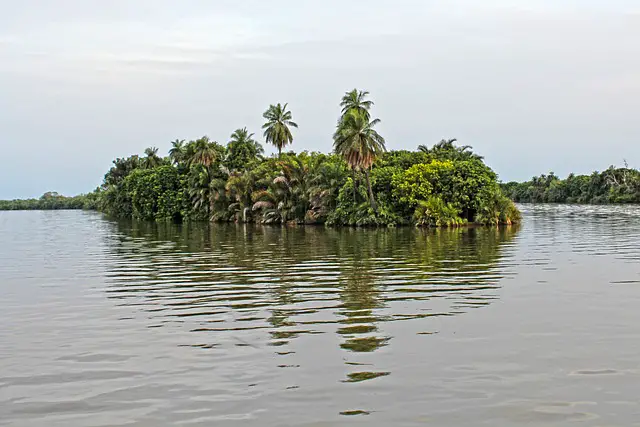
The Gambia River is a major river in West Africa that runs over 700 miles from the Fouta Djallon plateau in Guinea to the Atlantic Ocean, crossing Senegal and The Gambia.
What to see or do: Take a boat ride and enjoy the scenic beauty of the river along with its breathtaking wildlife and birdlife.
Visit the historic towns along its banks, including James Island, where slaves were once held before being taken to the Americas.
Don’t miss: Visit Kunta Kinteh Island (formerly known as James Island) to gain a deep understanding of the transatlantic slave trade and the impact it had on West Africa.
Insider travel tips: Be sure to visit during the dry season (November to May) to enjoy the best weather for river activities.
Consult with your guide before swimming in the river, as some sections may be dangerous due to strong currents or hippos and crocodiles.
10. Senegambia Craft Market – Kololi
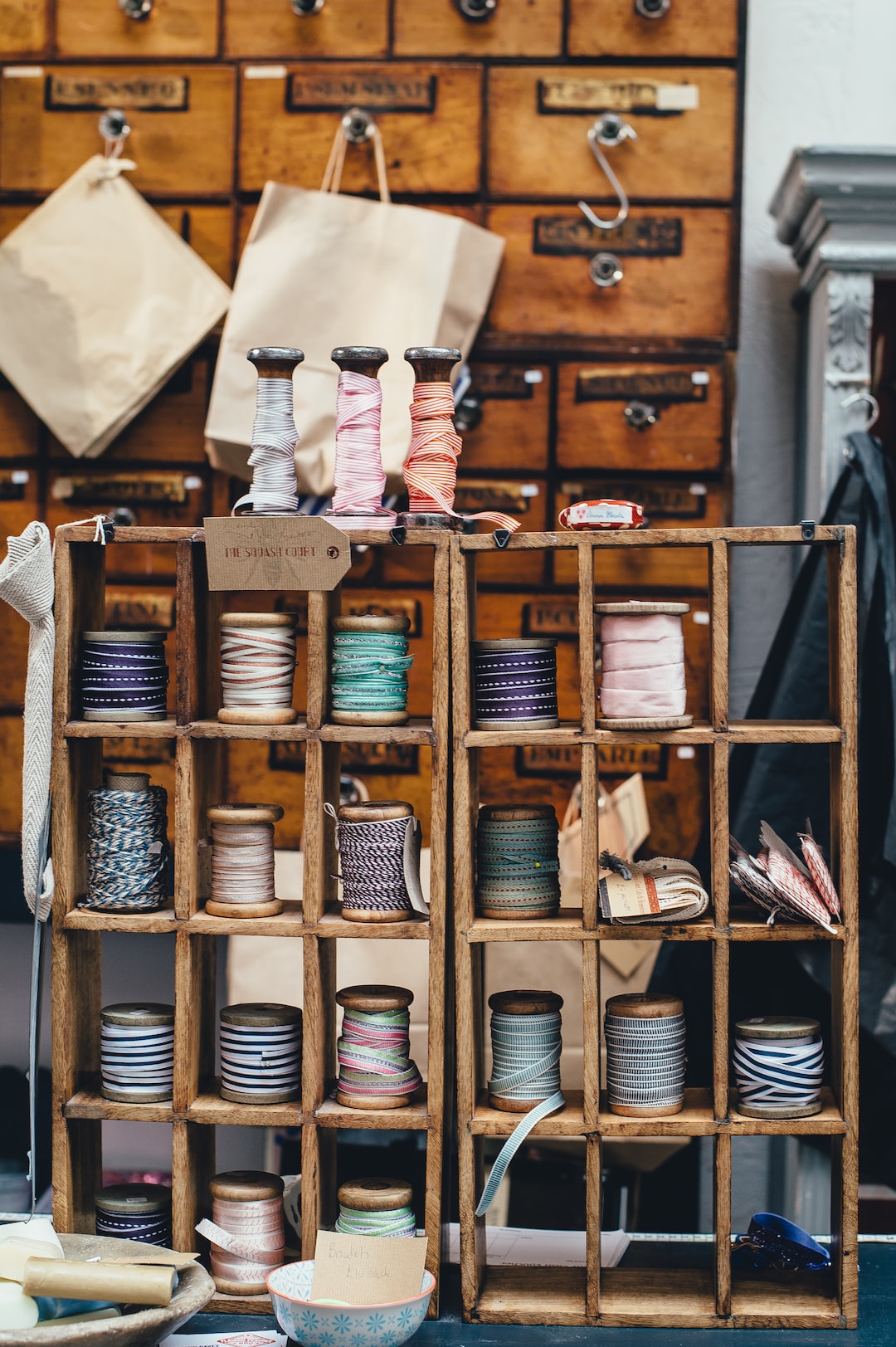
The Senegambia Craft Market is a bustling open-air market located in Kololi, The Gambia, where local artisans sell their handmade crafts and artwork.
What to see or do: Visitors can wander through the market and browse a wide selection of unique and colorful handicrafts, including pottery, textiles, clothing, jewelry, wood carvings, and leather goods.
Bargaining with the vendors is expected, so be prepared to haggle for the best price.
Don’t miss: While at the market, don’t miss the chance to see traditional West African drumming and dance performances that take place throughout the day.
Insider travel tips: – Wear comfortable clothes and shoes as the market can get crowded and hot.
11. Cape Point Beach – Bakau
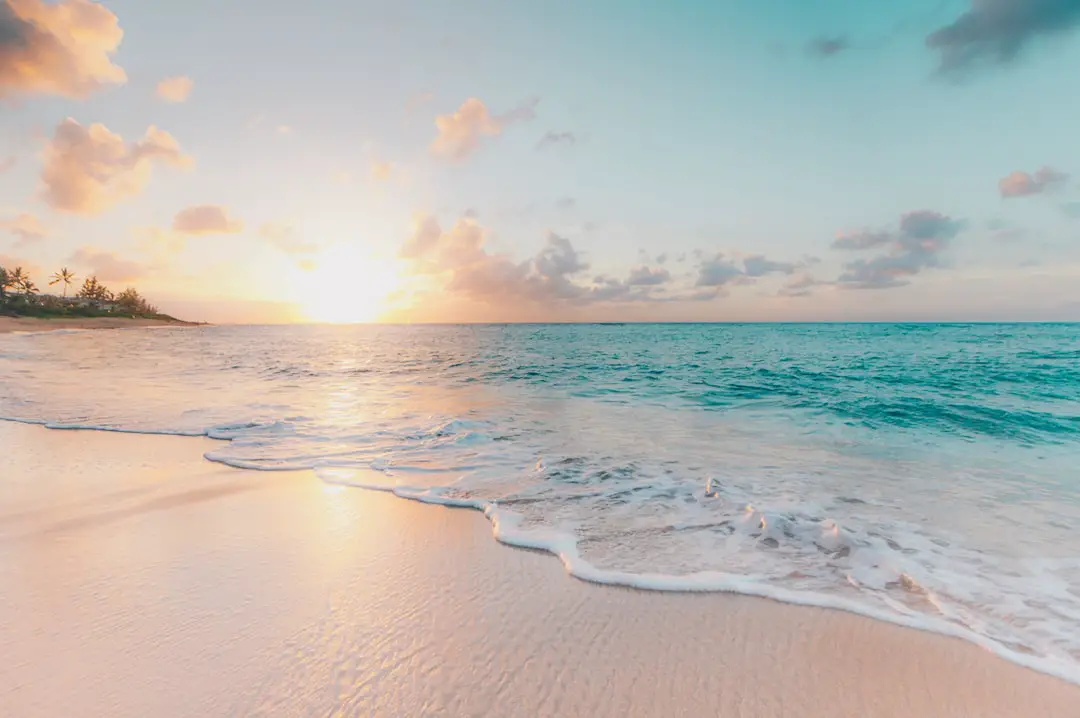
Cape Point Beach is a serene and picturesque beach located in the town of Bakau, on the Atlantic coast of The Gambia.
What to see or do: Enjoy the clear blue waters and soft white sand of Cape Point Beach. It’s an ideal spot for swimming, sunbathing, taking a stroll, or going for a jog on the beach.
You can also watch fishermen bring in their daily catch, or take a boat ride to explore nearby islands.
Don’t miss: Make sure to check out the beautiful sunset at Cape Point Beach, it’s truly a sight to behold. You can also sample some freshly caught seafood from the nearby restaurants.
Insider travel tips: If you’re interested in exploring the area, head to the Bakau Fish Market located nearby.
It’s a great place to witness the hustle and bustle of daily life and see the variety of fresh fish and seafood on offer.
You can also visit the nearby Kachikally Crocodile Pool to see live crocodiles up close. Remember to negotiate prices with vendors or taxi drivers and keep your belongings close to you.
12. Christ the King Cathedral – Banjul
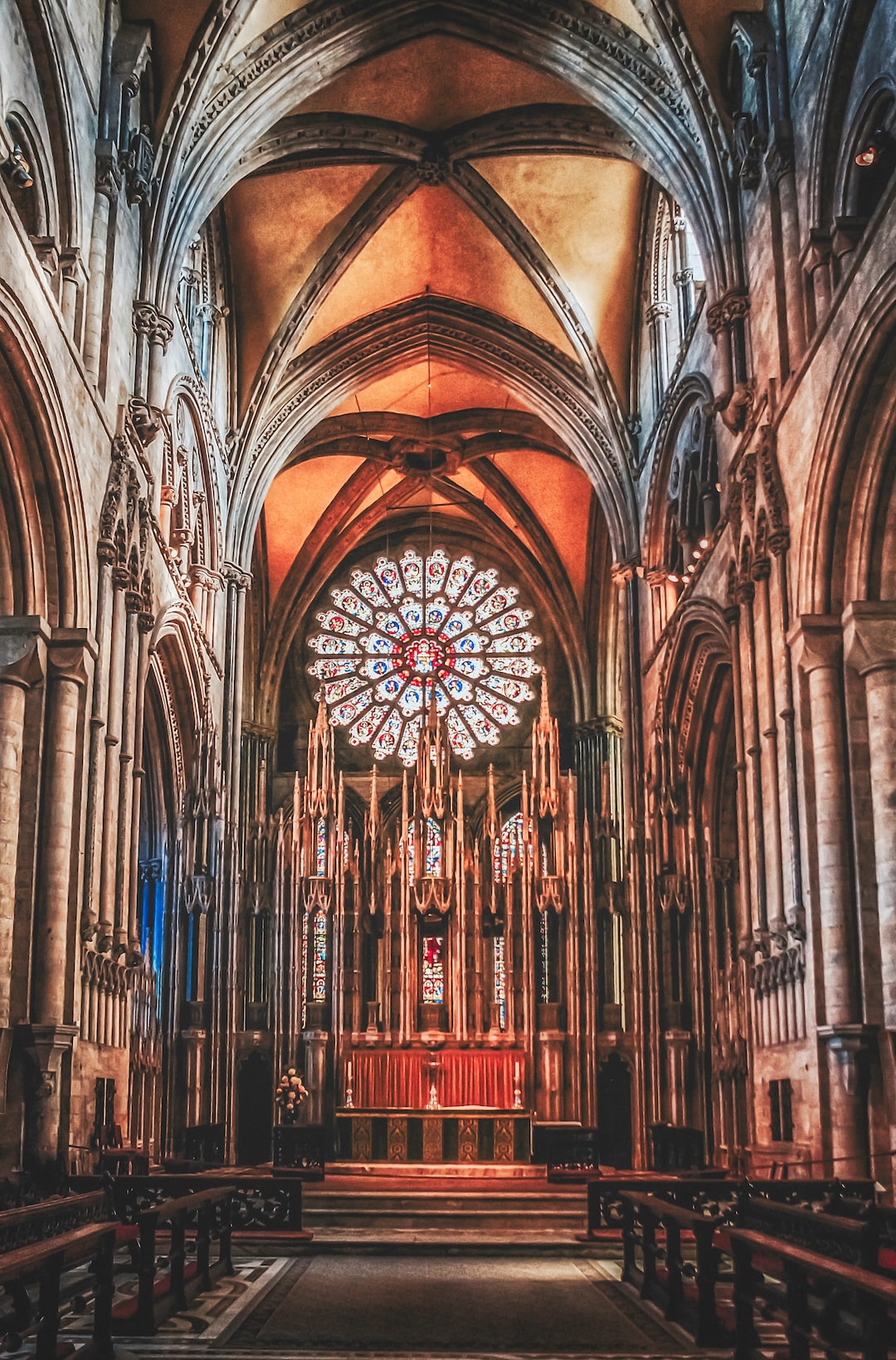
Christ the King Cathedral is a tall and imposing Catholic cathedral located in Banjul, the capital city of The Gambia.
What to see or do: The cathedral boasts impressive architecture that blends modern and traditional styles, with a striking facade that dominates the surrounding area. Visitors can attend mass or simply take in the peaceful atmosphere of the cathedral.
Don’t miss: Make sure to marvel at the stained-glass windows that adorn the interior of the cathedral, depicting various scenes from the Bible.
Insider travel tips: Visitors should dress modestly when entering the cathedral, meaning long pants or skirts and covered shoulders.
It’s also recommended to visit during mass times to get a true sense of the vibrancy and importance of the cathedral to the local community.
13. Kunta Kinteh Island and related sites – Kunta Kinteh
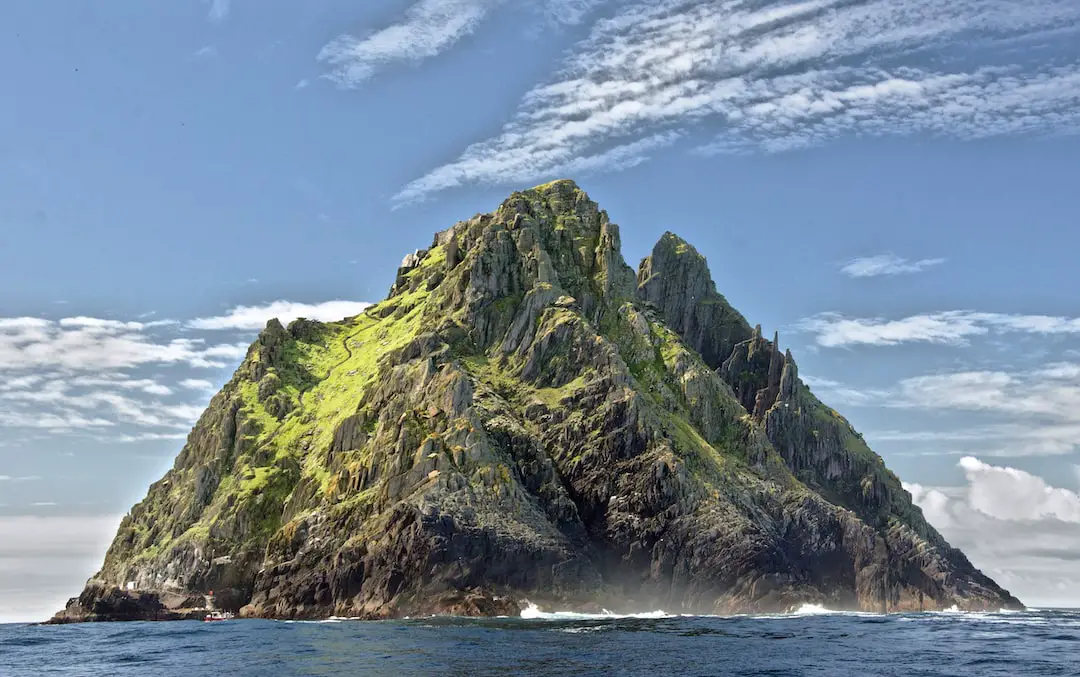
Kunta Kinteh Island is a small island that was once a major hub for the slave trade. It was named after Kunta Kinteh, a young Gambian man who was captured and sold into slavery.
The island was a key trading post for the British, who used it to transport enslaved Africans to the Americas.
What to see or do: Visitors to Kunta Kinteh Island can explore the island’s ruins and see the former slave trading post.
There is also a small museum on the island that offers a glimpse into the lives of the enslaved Africans who were once held there.
Visitors can also take a boat trip to nearby Juffureh, Kunta Kinteh’s hometown, and visit the Kunta Kinteh Roots Arch – a memorial to the millions of Africans who were forcibly taken from their homes.
Don’t miss: A tour of Kunta Kinteh Island is not complete without a visit to Juffureh and the Kunta Kinteh Roots Arch.
Visitors can learn about the culture and traditions of the local people and see some of the wells and graves that were used during the time of the transatlantic slave trade.
Insider travel tips: – Be sure to wear comfortable shoes as there is a fair amount of walking involved in exploring the island and Juffureh.
14. Janjangbureh Bridge – Janjangbureh
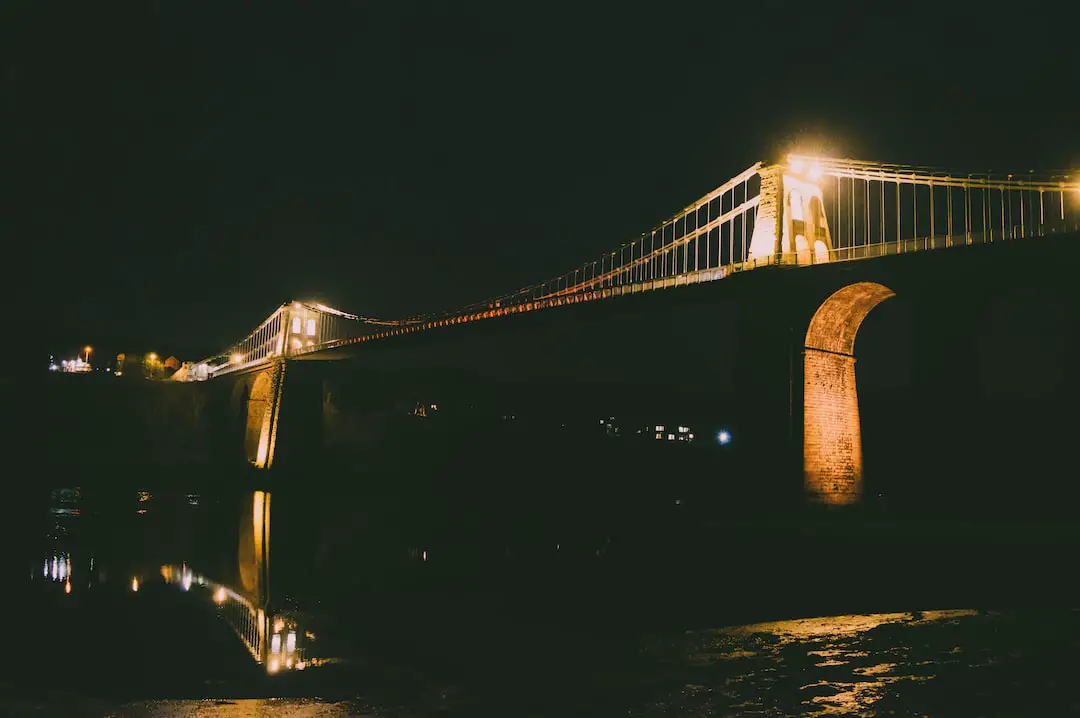
Janjangbureh Bridge, also known as the Georgetown Ferry Bridge, is a historic suspension bridge located in Janjangbureh, the central river region of The Gambia.
What to see or do: The bridge offers spectacular views of the River Gambia and its surroundings, making it a popular spot for photography and sightseeing.
Visitors can stroll along the pedestrian walkway, take in the peaceful atmosphere and watch the fishermen at work.
Don’t miss: The sunset views from the bridge are absolutely breathtaking, so be sure to visit during the golden hour.
Insider travel tips: – The best time to visit the bridge is early in the morning or late in the afternoon when the weather is cooler and the crowds are smaller.
15. Kotu Beach – Kotu
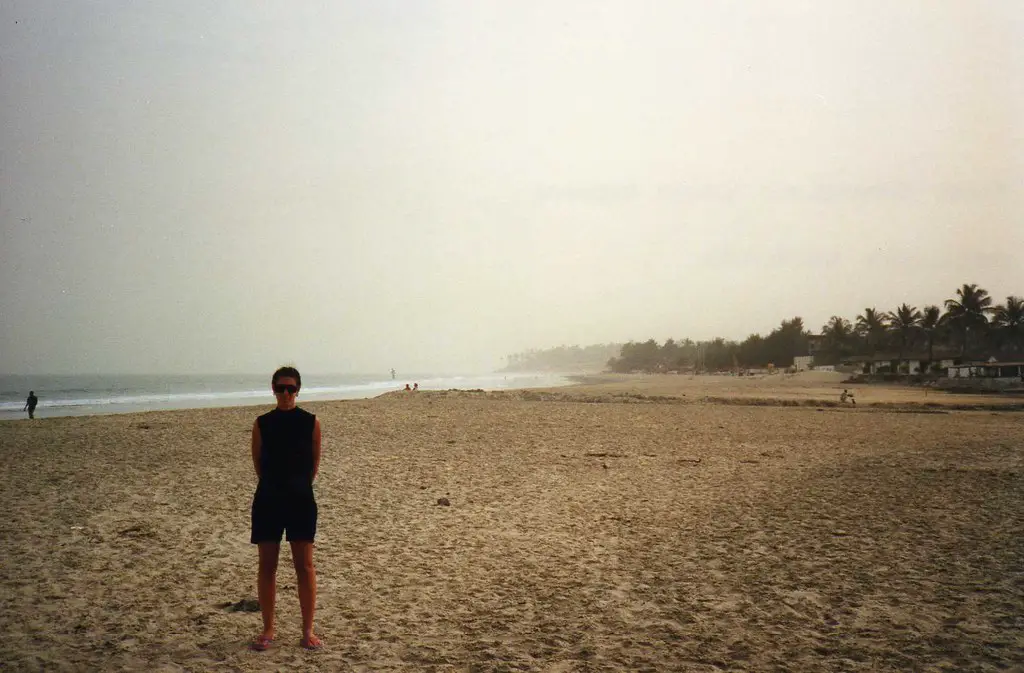
A popular beach town situated in the Gambia, West Africa.
What to see or do: Relax on the sandy beach, enjoy water sports such as windsurfing, take a boat trip on the river, or go for a nature walk in the nearby Kotu Wetlands.
Don’t miss: The vibrant local market for a true taste of Gambian culture.
Insider travel tips: Bargain with local vendors, bring sunscreen and insect repellent, and try the fresh seafood at the beachside restaurants.
16. Fajara Golf Course – Fajara
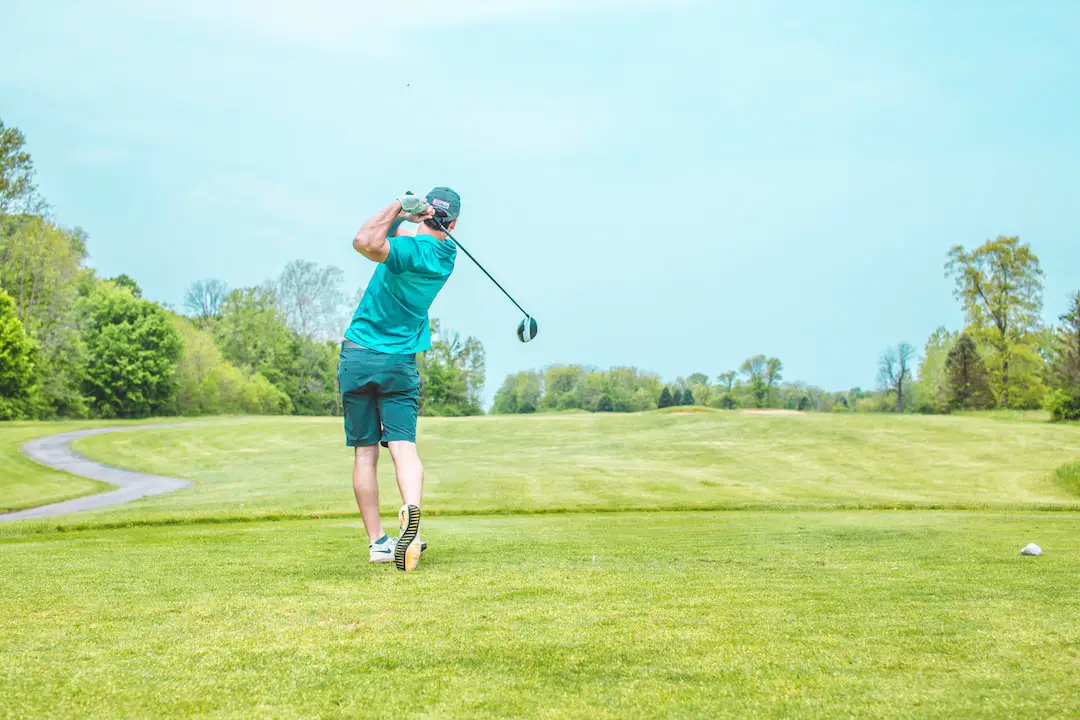
Fajara Golf Course is an 18-hole course situated in Fajara, Gambia.
What to see or do: Golf enthusiasts can indulge in a game or two at the scenic Fajara Golf Course. The course is set amidst lush greenery and has a challenging terrain to keep players on their toes.
Don’t miss: Don’t forget to catch the breathtaking views of the Atlantic Ocean from various points on the course.
Insider travel tips: Visit during the early morning hours to avoid the crowds.
17. Albert Market – Banjul
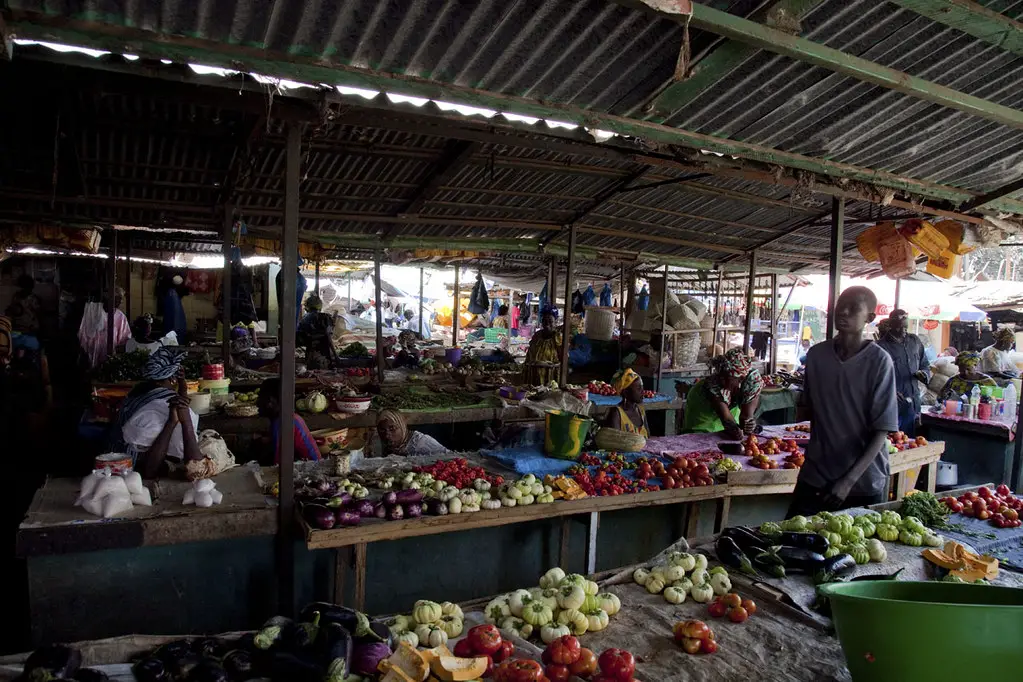
Albert Market is the largest and busiest market in Banjul, Gambia.
What to see or do: Visitors can explore the maze of stalls and shops selling a wide variety of goods, including textiles, food, crafts, and souvenirs.
The market offers a unique opportunity to experience local culture and interact with vendors.
Don’t miss: Don’t miss exploring the vibrant and colorful fabric section, where you can find beautiful and unique West African printed fabrics. Also, make sure to try some of the delicious street food, such as grilled meats and spicy sauces.
Insider travel tips: Bargaining is expected, so be prepared to negotiate prices with vendors.
18. Brufut Heights – Brufut
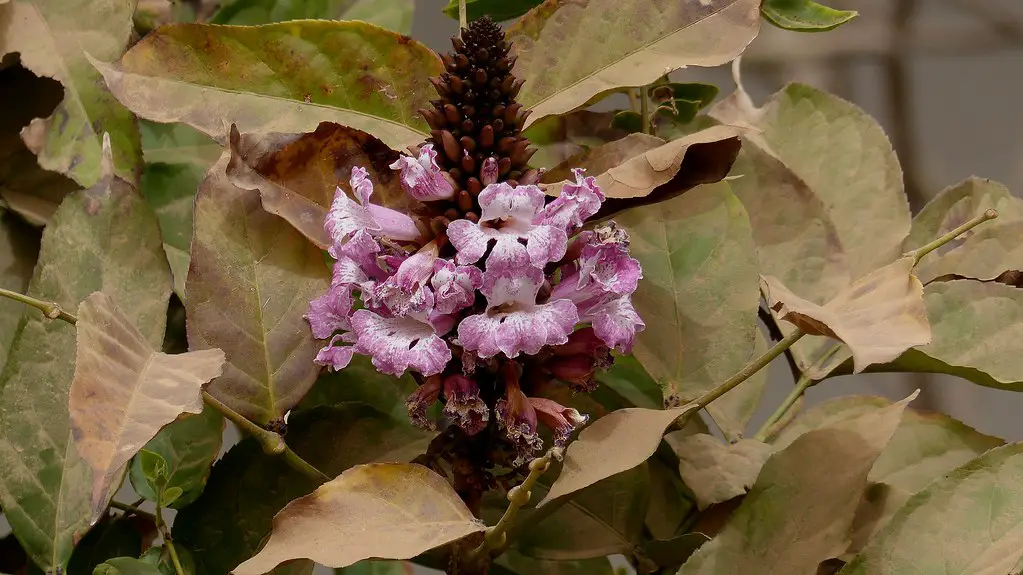
A residential neighborhood located in Brufut, a coastal town in the Gambia.
What to see or do: Take a walk through the neighborhood and admire the stunning views of the ocean, visit the nearby Brufut Forest for a peaceful hike, and check out the Brufut Museum for a glimpse into the country’s history and culture.
Don’t miss: The Brufut Heights Beach, which is a perfect spot for a day of sunbathing, swimming, and relaxing.
Insider travel tips: Make sure to bring plenty of sunscreen and water for your day at the beach, and consider hiring a local guide to learn more about the area and get off the beaten path.
Be respectful of the local culture and customs, and try some of the delicious Gambian cuisine at the local eateries in the town.
19. Tanji Fish Market – Tanji
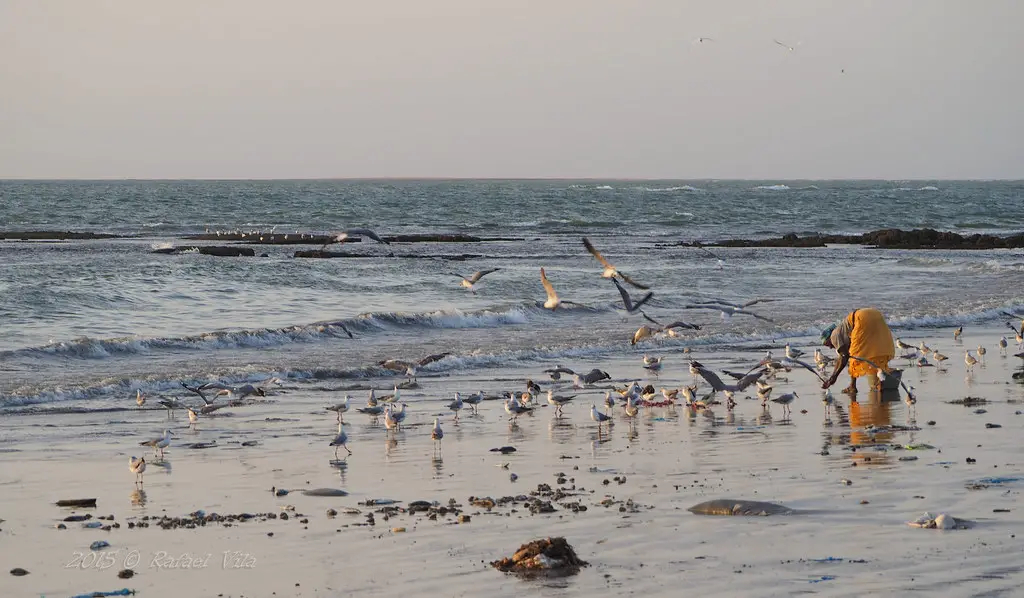
Tanji Fish Market is a bustling fishing village situated on the coast of Gambia, a popular spot where fresh fish is sold daily and local fishermen come to sell their daily catch.
What to see or do: Visitors can find an impressive range of fish species here, including barracuda, dorado, kingfish, squid, and tuna.
The busy market is a vibrant hub for locals where they can buy fresh fish to cook at home or enjoy being grilled by street vendors right on the spot.
Don’t miss: For an immersive experience, come early in the morning to witness the fishing boats coming ashore with their catch, and watch the fishermen hauling their boats into the sand.
The market is at its busiest between 9 am and 12 pm.
Insider travel tips: Come prepared with cash in small denominations as credit cards are not accepted.
20. Bijilo Forest Park – Bijilo
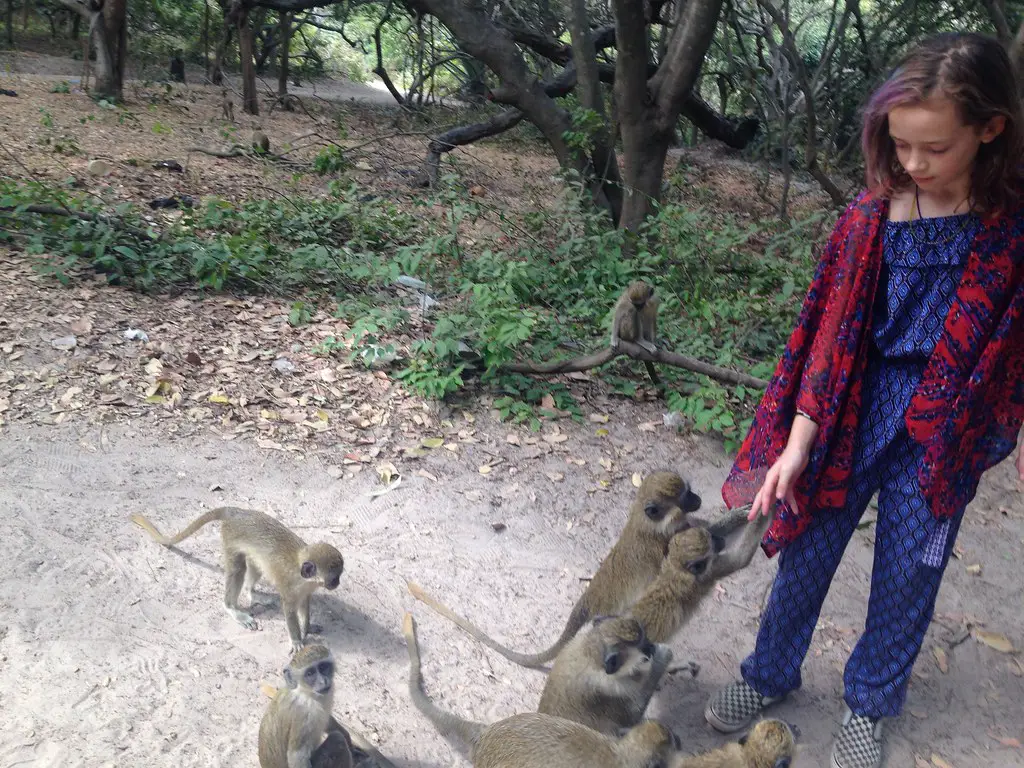
Bijilo Forest Park is a nature reserve located in the town of Bijilo in Gambia.
What to see or do: Explore the lush forest and observe a variety of wildlife including monkeys, birds, and reptiles.
Take a guided tour with a knowledgeable local guide or go on a bird-watching excursion for a chance to spot rare and exotic species.
Don’t miss: Don’t miss the opportunity to see the peaceful green monkeys that inhabit the forest. They are friendly and often approach visitors, making for an unforgettable experience.
Insider travel tips: Wear comfortable shoes as the terrain can be uneven and muddy. Don’t forget to bring insect repellent as mosquitos and other bugs can be abundant in the forest.
It’s recommended to visit in the early morning or late afternoon for the best chance of spotting wildlife.
21. Serekunda Market – Serekunda
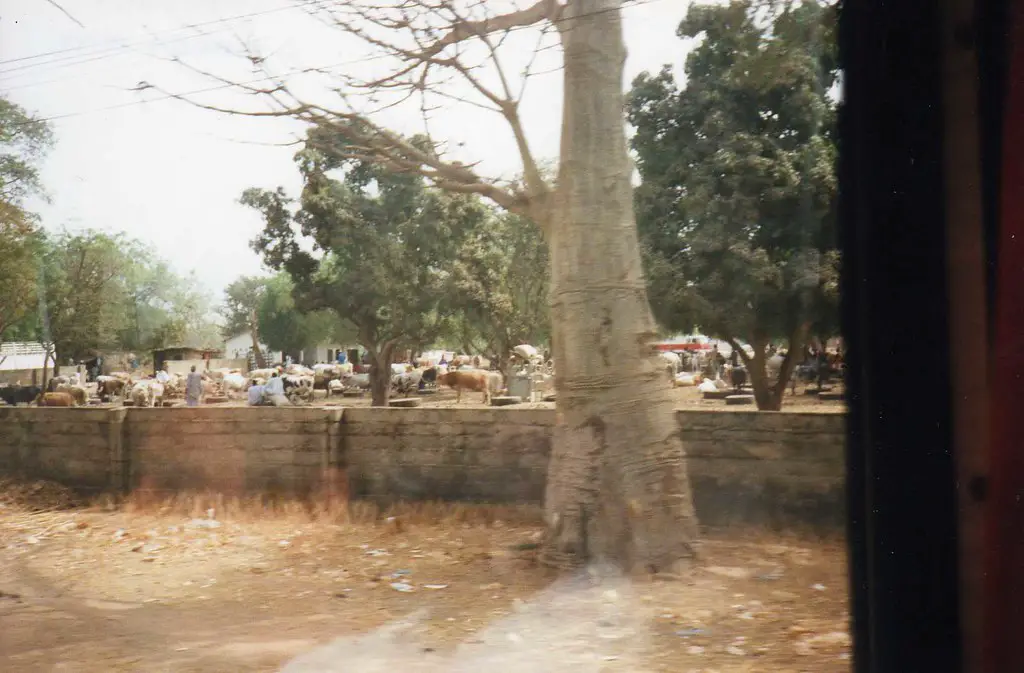
Serekunda Market is the largest and busiest market in The Gambia, located in the city of Serekunda.
What to see or do: The market is a vibrant and chaotic place where you can find all kinds of goods, from fresh produce and clothes to handicrafts and artwork.
Take a stroll through the market’s crowded alleyways and soak up the lively atmosphere as you watch vendors haggle with customers over prices.
Don’t miss: Don’t miss the opportunity to sample some of the delicious local street food, such as grilled meats, rice dishes, and fresh fruit.
You can also find traditional medicines, textiles, and wooden carvings.
Insider travel tips: Be prepared for a lot of noise, crowds, and bargaining, and keep an eye on your belongings. Weekends tend to be especially busy, so try to visit during the week if possible.
Be respectful of the vendors and their goods, and don’t be afraid to bargain – it’s expected!
22. Paradise Beach – Sanyang
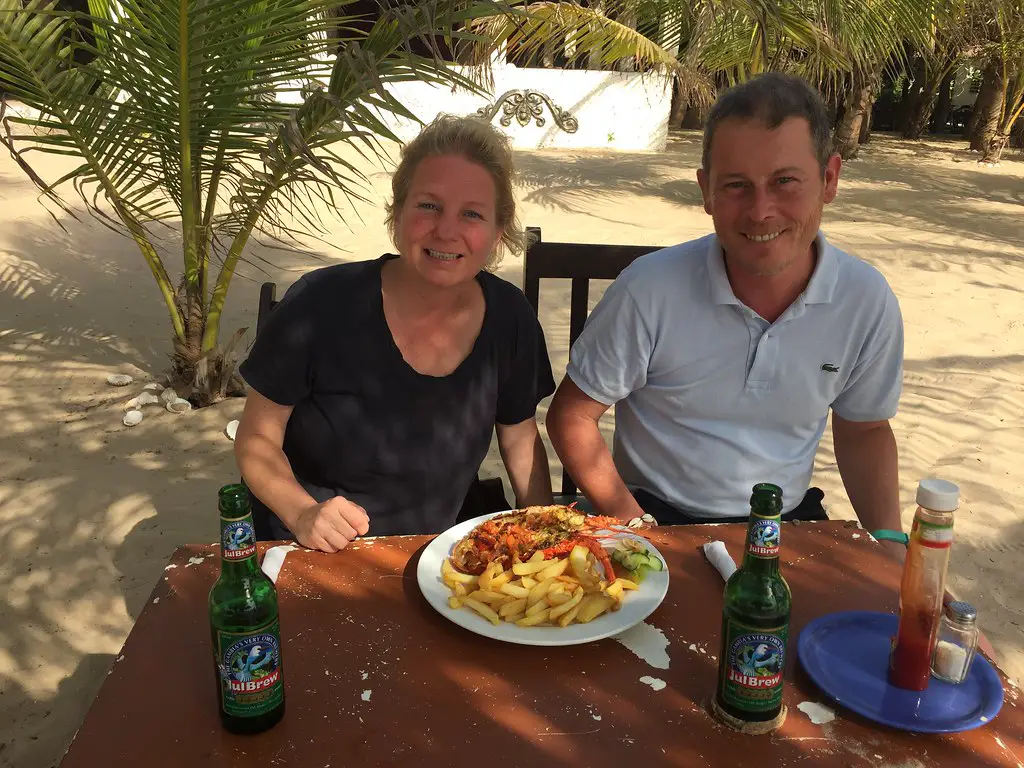
A beautiful, secluded beach located in Sanyang, The Gambia.
What to see or do: Relax in the crystal-clear waters and soak up the sun on the soft white sands. Take a stroll along the beach or participate in water sports like jet skiing, parasailing, and kayaking.
You can even join a fishing excursion to catch your lunch.
Don’t miss: The stunning sunsets over the ocean are not to be missed. Stay until the evening to enjoy a captivating view of the sun dipping below the horizon.
Insider travel tips: Be sure to bring sunscreen and ample drinking water as there aren’t many vendors nearby. You can rent beach chairs and umbrellas for a comfortable day at the beach.
Try to visit on weekdays to avoid crowds.
23. Tanbi Wetlands National Park
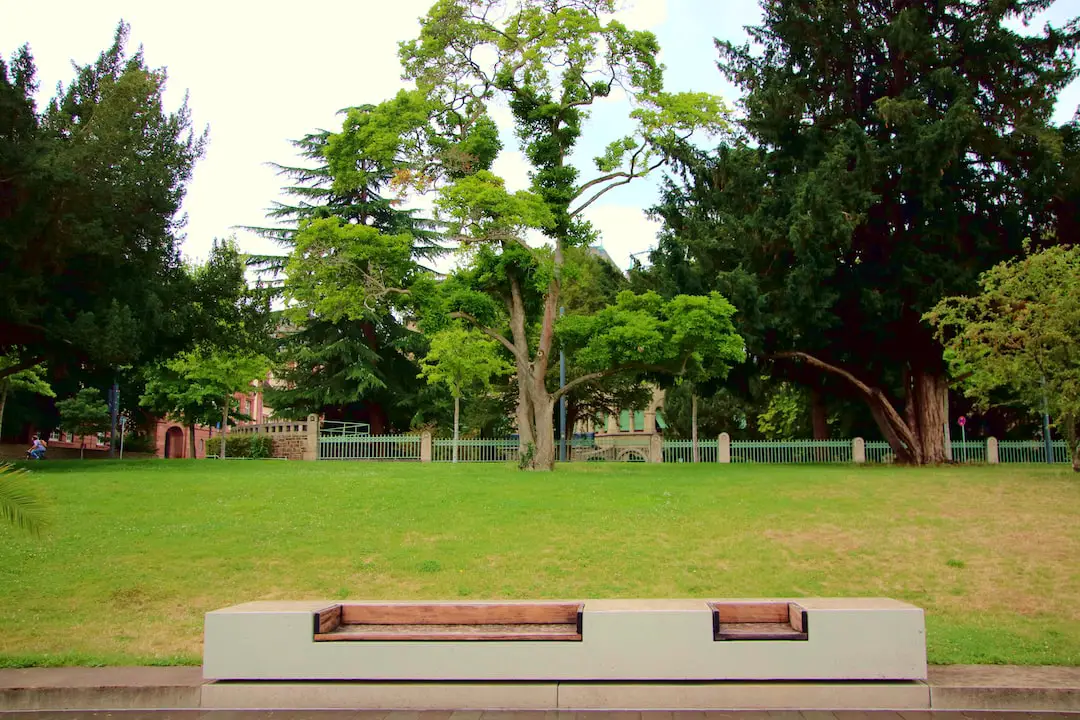
Tanbi Wetlands National Park is a scenic national park located in Hyogo Prefecture, Japan.
What to see or do: With multiple walking paths and observation towers, visitors can enjoy the unique flora and fauna of the wetland, including various types of birds such as the Japanese cranes, swans, and ducks.
Don’t miss: Don’t miss the seasonal changes, as the park’s scenery varies dramatically throughout the year.
The cherry blossoms in spring, the lush greenery in summer, the vibrant autumn leaves, and the tranquil snowscapes in winter are all worth experiencing.
Insider travel tips: – Early morning or late afternoon are the best times for bird viewing.
24. Sunset Boulevard – Banjul
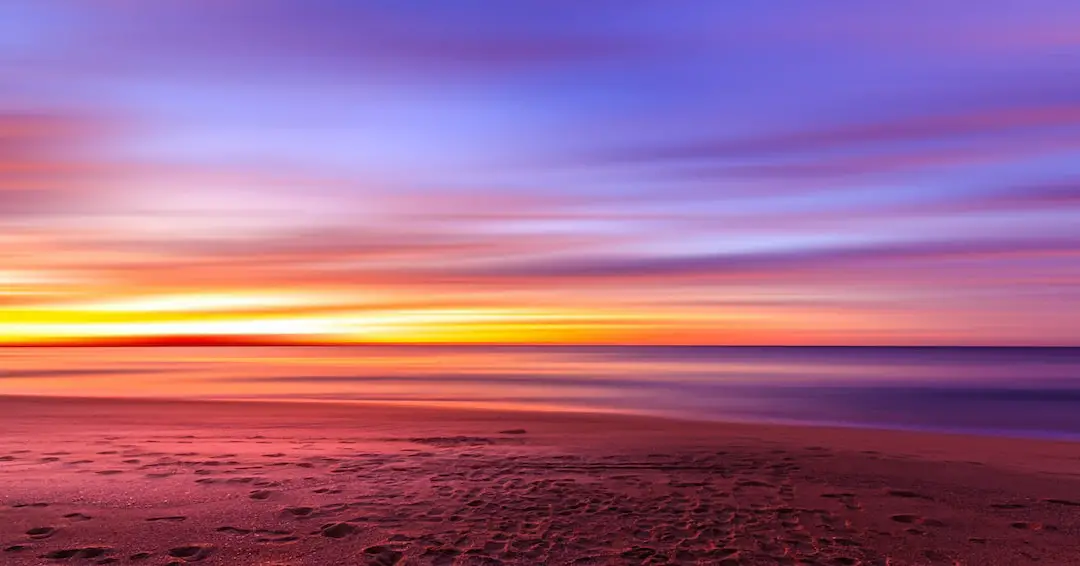
A major thoroughfare in Banjul, the capital city of The Gambia.
What to see or do: – Drive or walk along the boulevard to get a glimpse of the bustling city life and see some of its iconic landmarks.
Don’t miss: The stunning sunset views over the Atlantic Ocean.
Catch the breathtaking sight of the sun setting behind the horizon as it casts an orange and pink glow over the city and the sea.
Insider travel tips: – Be wary of traffic, especially during rush hour.
25. Bakoteh Dumpsite – Bakoteh

Bakoteh Dumpsite is a large waste disposal site located in the town of Bakoteh in the Gambia.
What to see or do: There’s not much to see or do at the dumpsite itself as it’s mainly used for waste disposal. However, visitors can witness the substantial amount of waste being generated by the local community.
Don’t miss: The dumpsite serves as a reminder of the importance of proper waste management and the impact of human actions on the environment.
Insider travel tips: Visitors should be aware that the dumpsite emits a strong odor and can be a bit overwhelming. It’s recommended to wear a mask or cover your nose and mouth to avoid inhaling any fumes.
Visitors should also be cautious and stay on designated paths to avoid any accidents or injuries.
26. Kiang West National Park
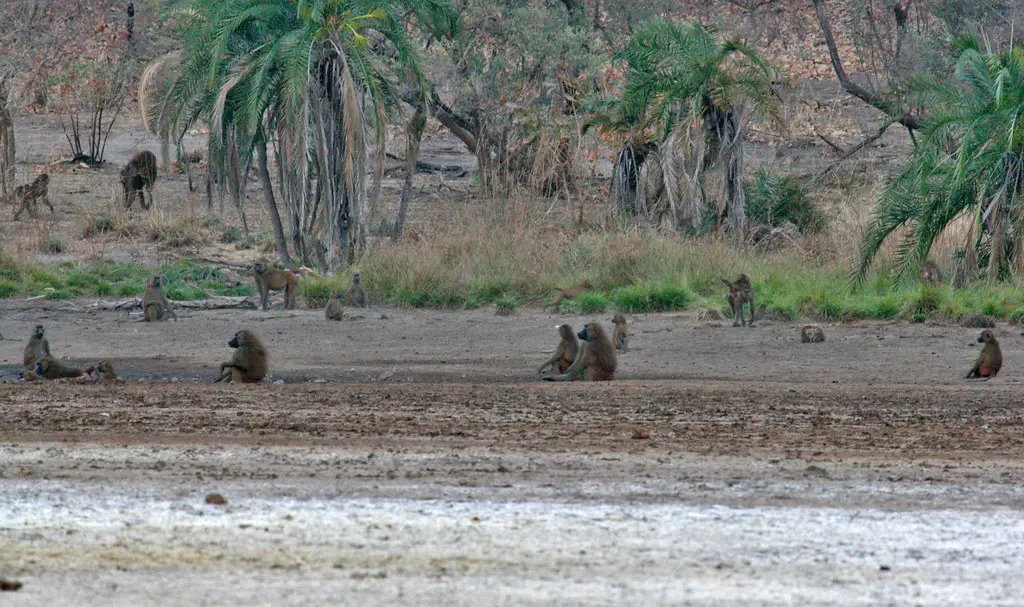
Kiang West National Park is a protected area in The Gambia, covering an area of 11,000 hectares in the Upper River Region.
What to see or do: Visitors can explore the park on foot or by vehicle. The park is home to a variety of wildlife including baboons, warthogs, and a variety of bird species.
The park also has some ancient Baobab trees that are over 1,000 years old.
Don’t miss: The highlight of any visit to Kiang West National Park is seeing the endangered Western Giant Eland. This species is one of the largest antelopes in the world and visitors can witness them in action.
Insider travel tips: – It’s best to visit the park during the dry season (November to May) when animal sightings are more frequent.
27. Lamin Lodge
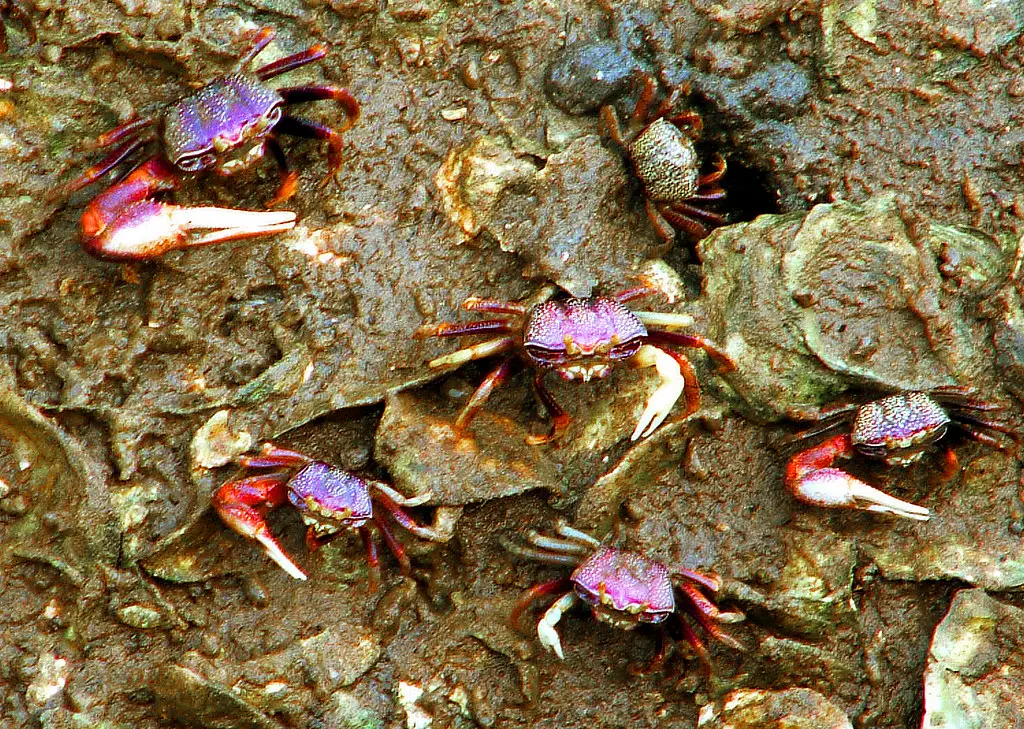
A traditional Gambian restaurant and lodge built on stilts over the mangroves.
What to see or do: Enjoy a meal while overlooking the water, take a boat tour of the mangroves, or watch the fishermen bring in their daily catch.
Don’t miss: The chance to try traditional Gambian dishes like domoda (peanut stew) and yassa (marinated chicken or fish).
Insider travel tips: Arrive for lunch early to get a prime spot for the spectacular views. If you’re planning on taking a boat tour, negotiate the price beforehand and make sure you have a life jacket.
Be prepared for sometimes pushy vendors.
28. Banjul Beach
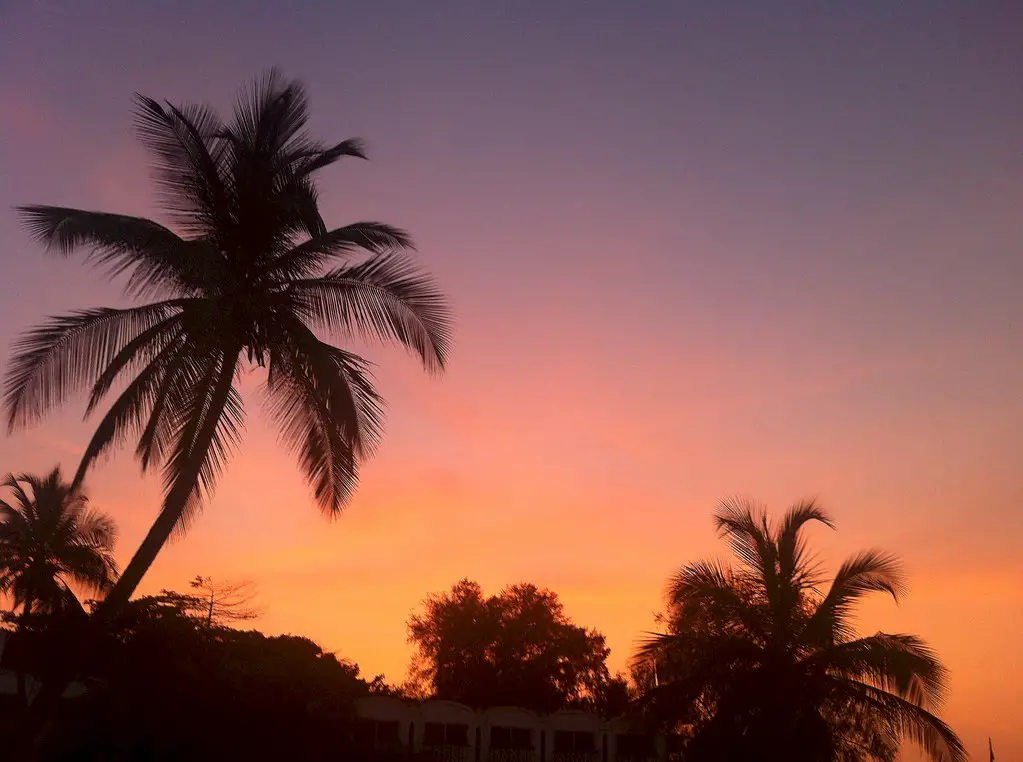
Banjul Beach is a long sandy beach that stretches along the capital of Gambia, Banjul.
What to see or do: Visitors can go for a stroll along the beach, sunbathe, swim in the ocean or rent a boat to explore the coastline.
In addition, the beach is dotted with restaurants and bars where travelers can taste the local cuisine and enjoy a cold drink while listening to live music.
Don’t miss: The sunset over the Atlantic Ocean is a spectacle not to be missed.
Watching the sun go down and the sky light up with pink, red and orange hues is a sight that will stay with you forever.
Insider travel tips: Beach vendors can be quite persistent, so be prepared to say no firmly if you’re not interested. Additionally, the beach can get crowded on weekends and holidays, so try to go during the week if possible.
Finally, it’s advisable to wear sunblock and bring a hat to protect yourself from the sun.
29. Bao Bolong Wetland Reserve
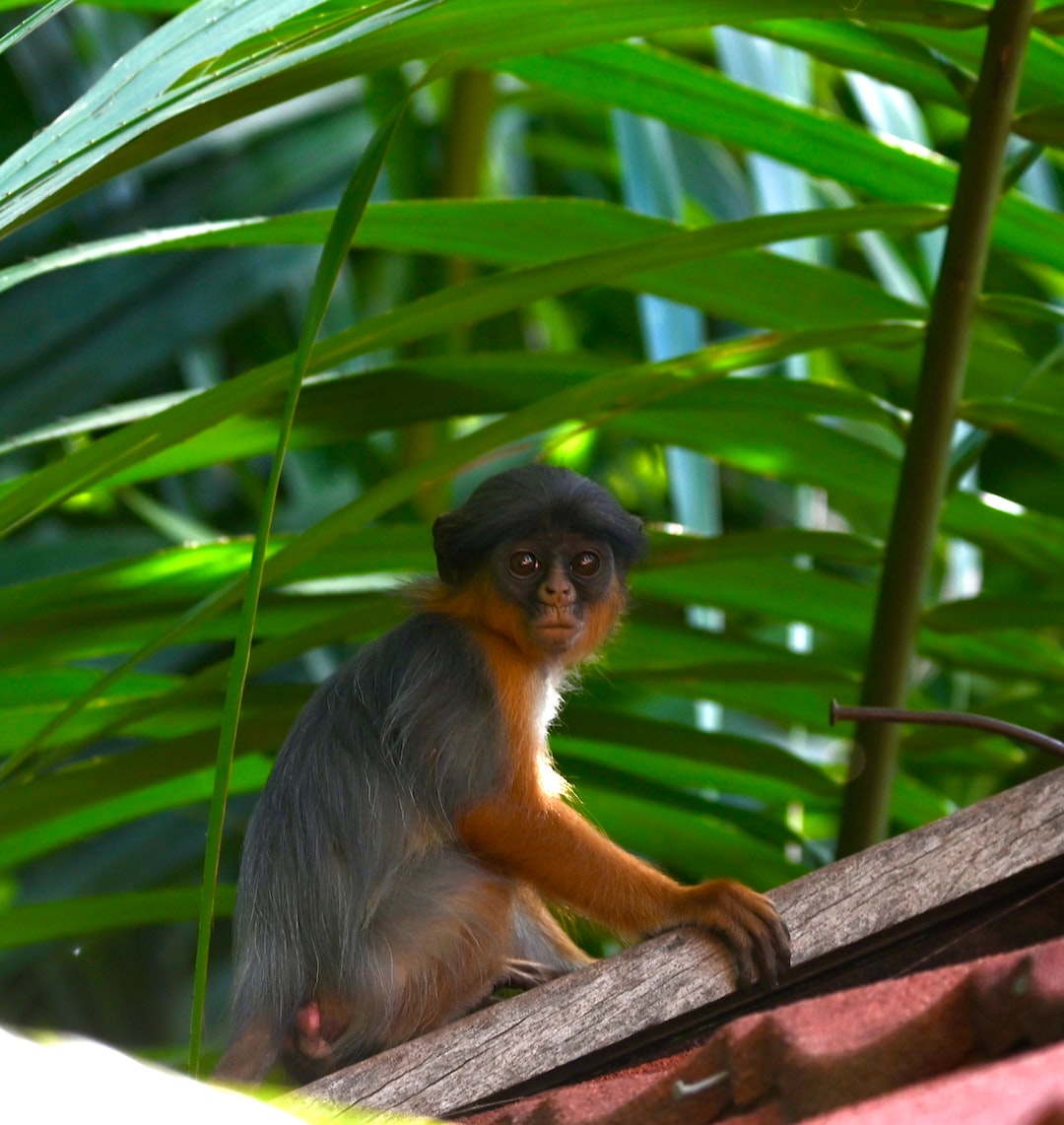
Bao Bolong Wetland Reserve is a nature reserve located in Gambia, West Africa, covering about 220 square kilometers.
What to see or do: Visitors can go on a guided boat tour to see the diverse wildlife such as monkeys, hippos, crocodiles, and over 500 species of birds.
The reserve offers stunning views of the mangroves, savanna, and gallery forests.
Don’t miss: Don’t miss the chance to see the rare West African manatee, an endangered species that resides within the park. It’s also recommended to visit Kiang West National Park, which is adjacent to Bao Bolong.
Insider travel tips: The best time to visit is during the dry season, which is from November to May. It’s essential to bring insect repellent since mosquitos are prevalent in the area.
For an authentic experience, stay in one of the nearby local lodges and enjoy traditional Gambian cuisine.
30. Gambia National Park

Gambia National Park is a protected reserve situated in the western part of Gambia, known for its rich biodiversity and magnificent wildlife.
What to see or do: Visitors can explore the park on guided tours. The park’s dense forests are home to various primates, bird species, antelopes, and hyenas.
Don’t miss: A visit to Gambia National Park wouldn’t be complete without a stop at the famous Baboon Islands, accessible by boat or canoe.
Here, you can witness rare chimpanzees in their natural habitats and take a river safari through the mangrove swamps.
Insider travel tips: Plan your visit during the dry season (November – May) for the best wildlife viewing opportunities.